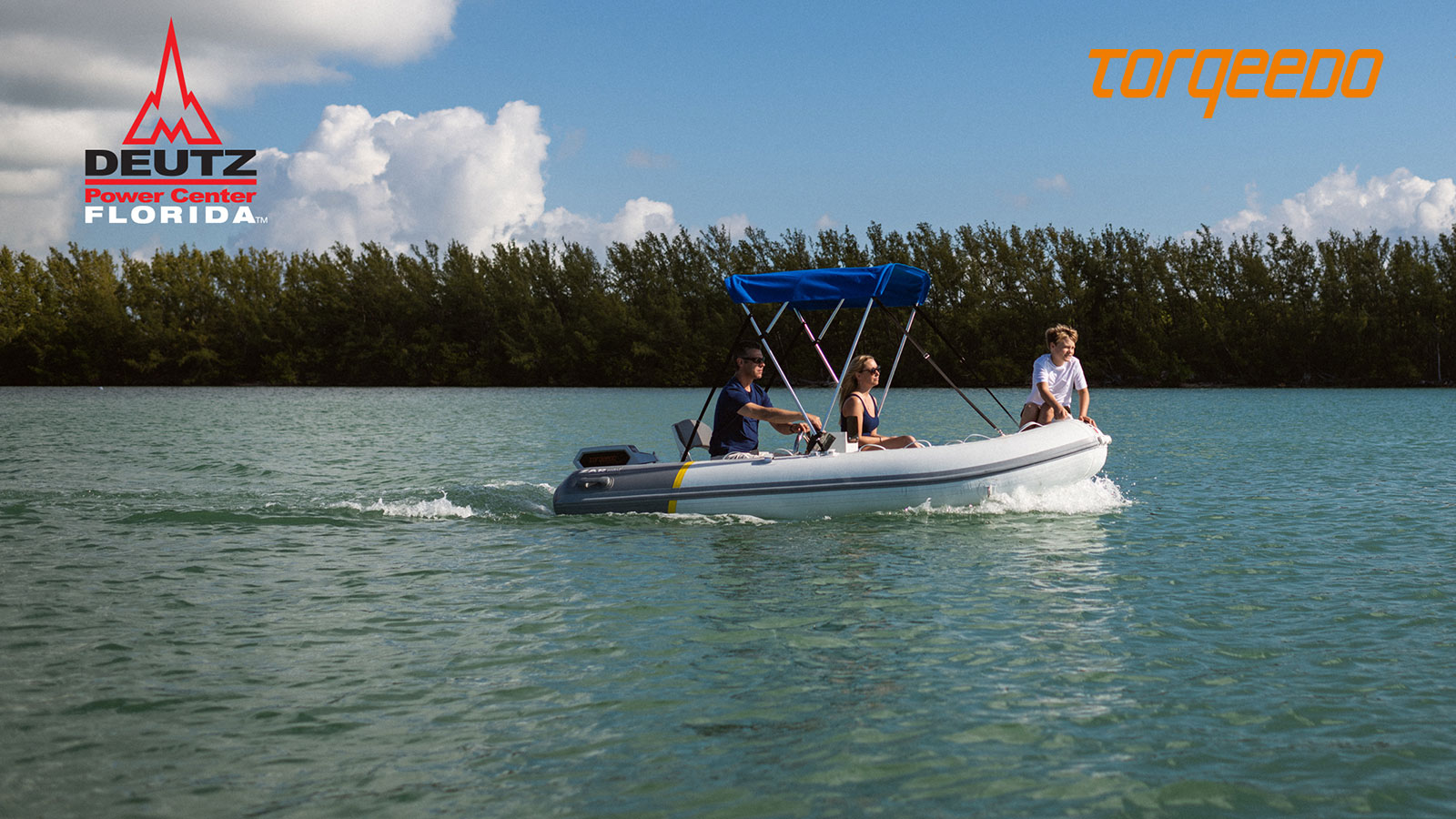


DEUTZ Power Center Florida (South) in West Palm Beach has taken on the responsibility for parts, sales and service of Torqeedo marine electric drive systems in South Florida. Torqeedo, a subsidiary of DEUTZ since 2017, offers electric and hybrid drives with power outputs of between 0.5 and 100 kW for commercial applications and leisure use.
“We are pleased to offer a sales and service point for our sister company Torqeedo in the important South Florida marine market,” said Bob Mann, president and CEO of DEUTZ Corporation. “Our Power Center philosophy is to take good care of our customers through dedicated service and parts support, along with selling DEUTZ engines to customers with DEUTZ powered equipment. Through periodic maintenance programs, emergency 24-hour service support and plenty of DEUTZ genuine parts on our shelves, we’re able to successfully keep our customers up and running. We look forward to providing the same level of support for Torqeedo customers. Our colleagues at Torqeedo are world leaders in the electrification of marine drive systems, and we look forward to joining them on this exciting journey.”
DEUTZ Power Center Florida (South) will carry the most popular electric outboards and accessories from Torqeedo’s Cruise, Travel and Ultralight model lines. Inboard, saildrive and pod motors will also be available, as well as the powerful Deep Blue and Deep Blue Hybrid systems for commercial vessels and yachts up to 120 feet. Trained service and support staff will be on-site with a complement of spare parts for Torqeedo’s climate-friendly drive systems, ready to serve both commercial and recreational clients.
“We’re thrilled that Torqeedo customers in Florida will have access to a fully stocked sales and service facility with a highly trained and professional staff at the new DEUTZ Power Center in West Palm Beach,” said Steve Trkla, president of Torqeedo, Inc. “We look forward to exploring more opportunities for cooperation in the USA.”
To learn more about DEUTZ Power Centers, please visit › www.deutzsupport.com/locations/. For more information about Torqeedo marine electric drive systems, visit › www.torqeedo.com.
More information:
Find high-resolution pictures at the: › Torqeedo Dropbox
Find the main catalogue 2020 here: › Catalogue 2020
DEUTZ Power Center in South Florida
- Press Releases
- Commercial